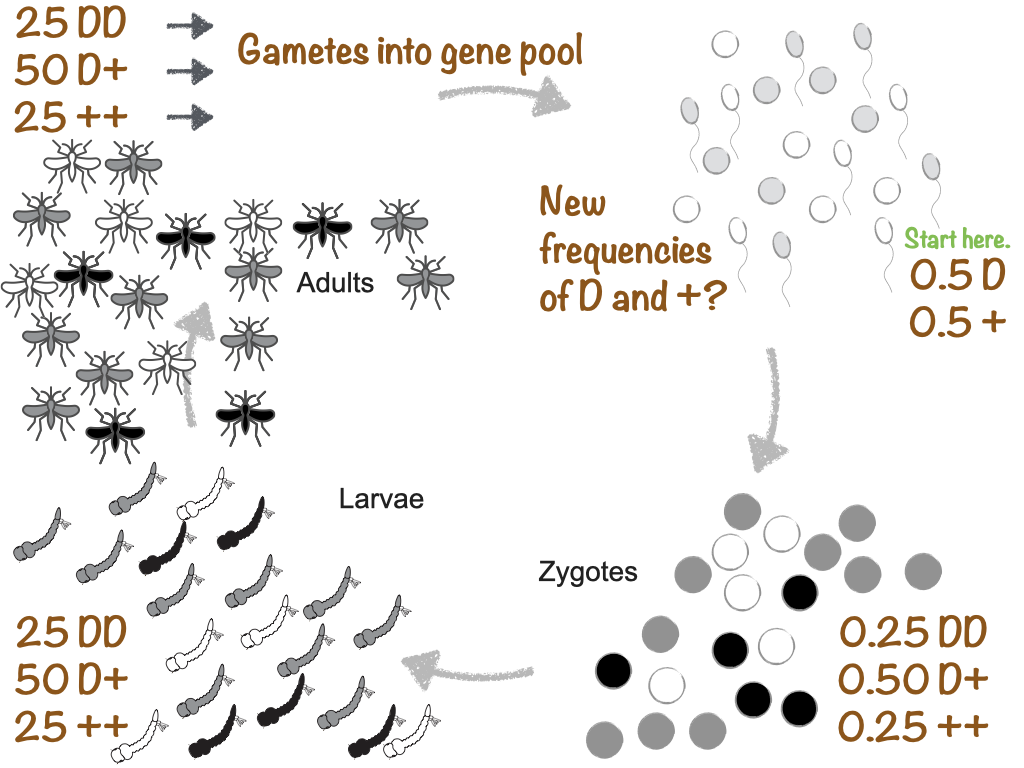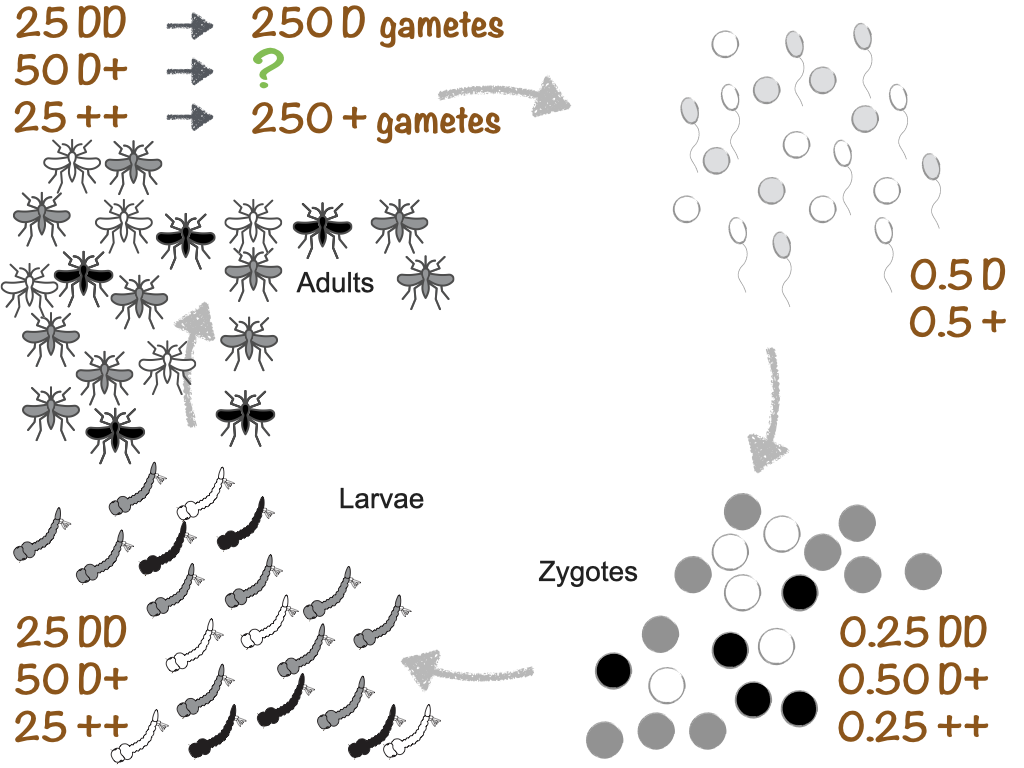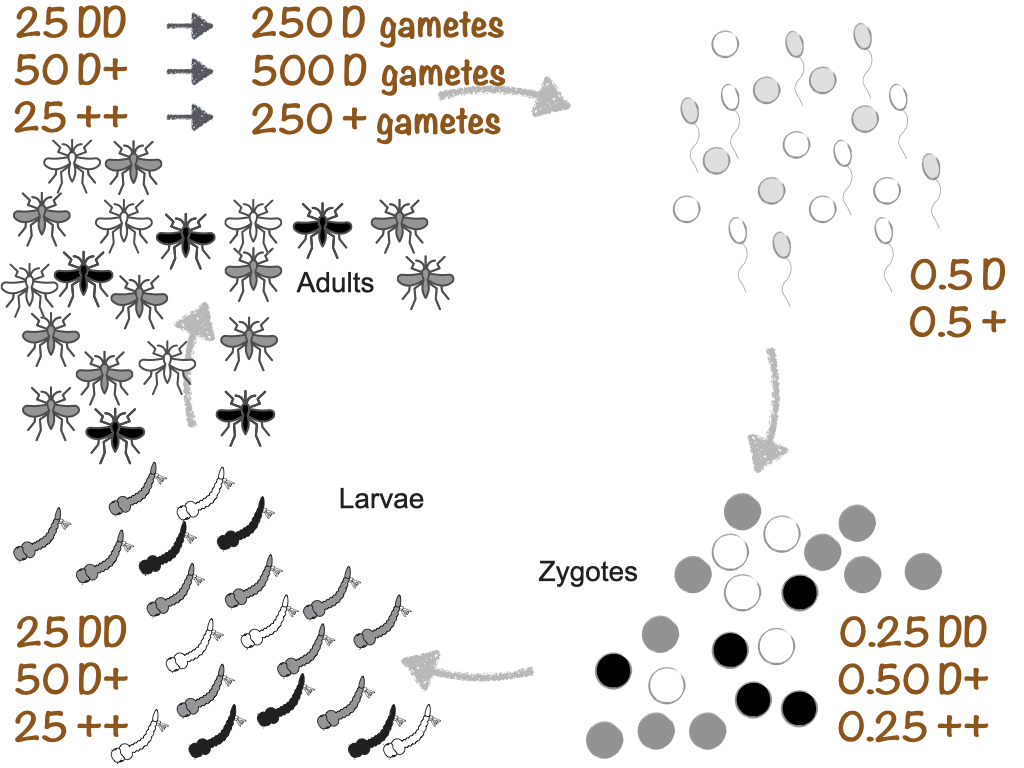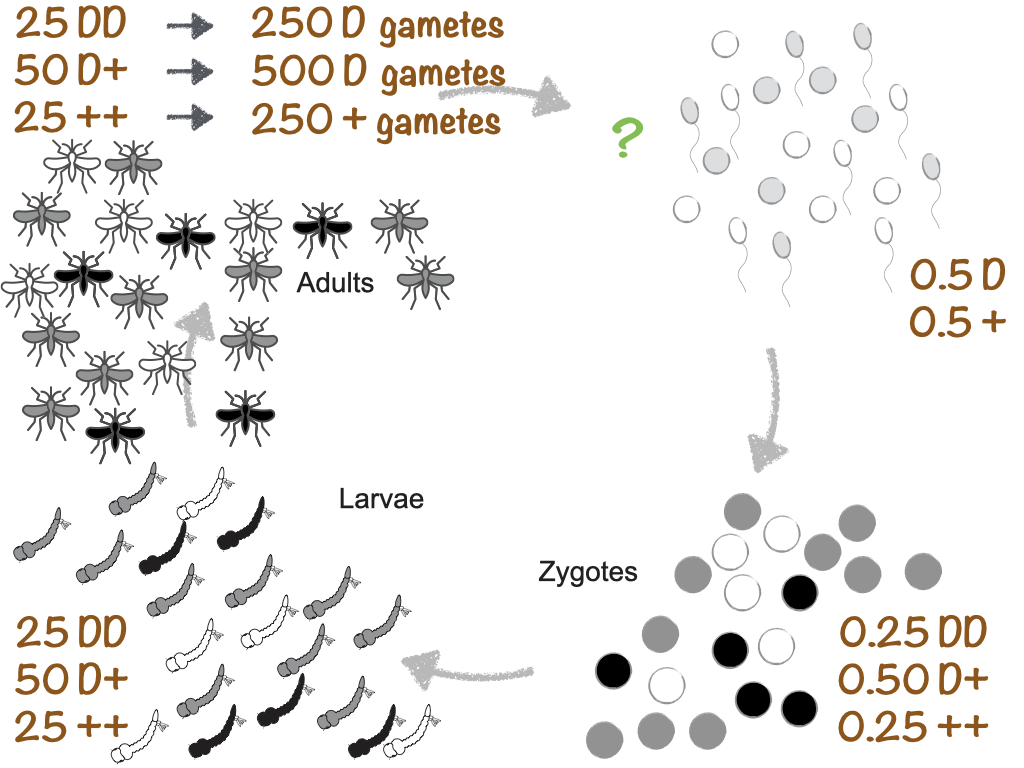9.3 Predicting how the gene drive alters evolution
If the drive has no effect on the fitness of its carriers, how might we expect its frequency to change across generations in a population?

As we did with our imaginary songbirds, we will follow a mosquito population for a full turn around its life cycle—starting and ending with the gene pool. Imagine that the frequency of the gene drive, allele D, is 0.5, as is frequency of the + allele.
When we draw gametes at random from the gene pool to make zygotes, a quarter are DD, half are D+, and a quarter are ++.
Because it’s easier (for the author!) to think in numbers than in frequencies, we imagine that our zygotes develop into 100 larvae: 25 homozygotes for the gene drive, 50 heterozygotes, and 25 homozogytes for the non-drive allele. And we let all these larvae grow up to be adults.
All that remains is to let the adults make, let’s say, 10 gametes each. This is straightforward for the homozogotes:

But what about in the heterozygotes? Remember, all the gametes they produce carry the gene drive:

So what are the allele frequencies in the new gene pool?

They are 0.75 for D and 0.25 for +:

The population has evolved, rather substantially, even though the gene drive has no effect on the fitness of the individuals who carry it.